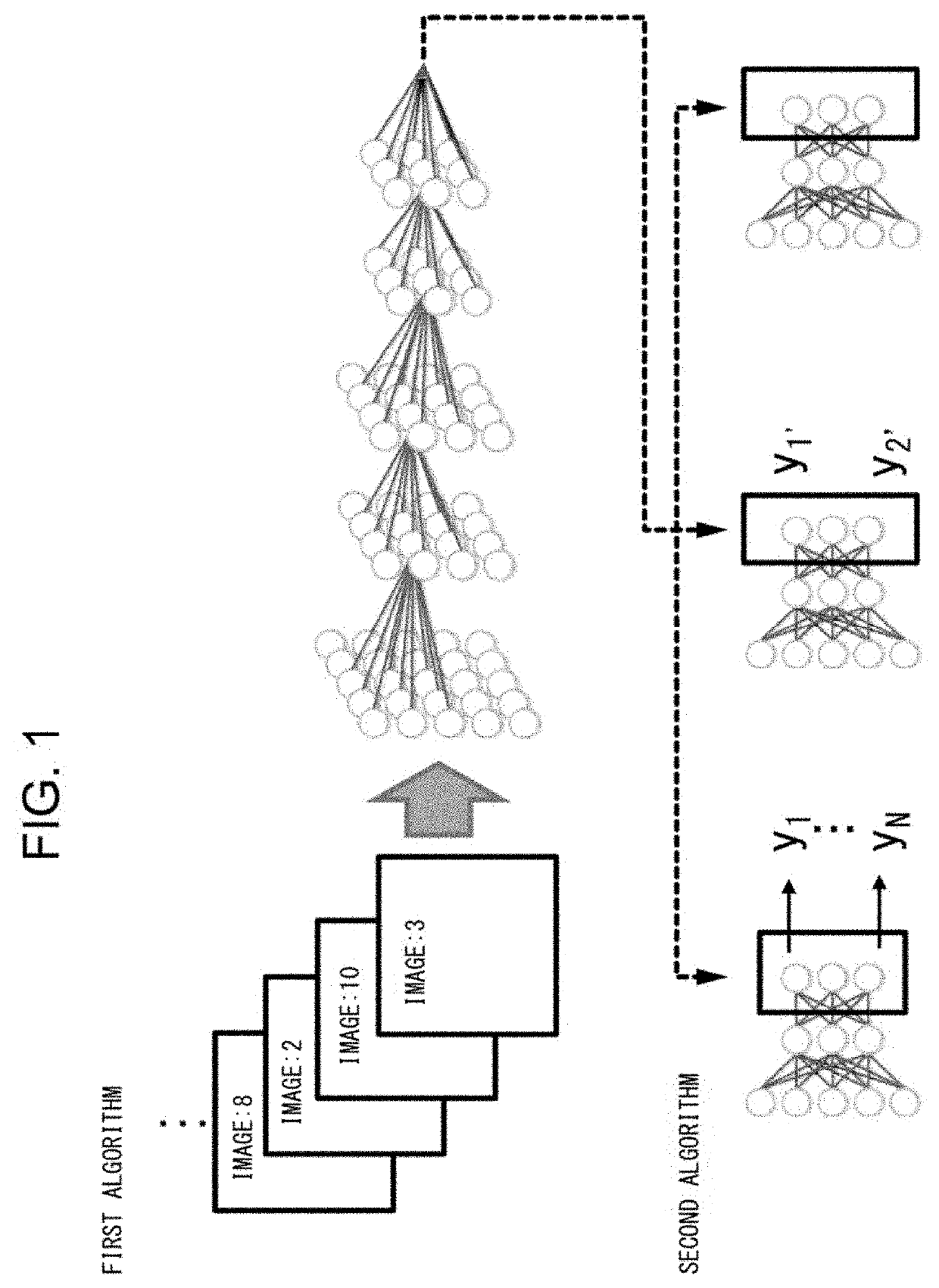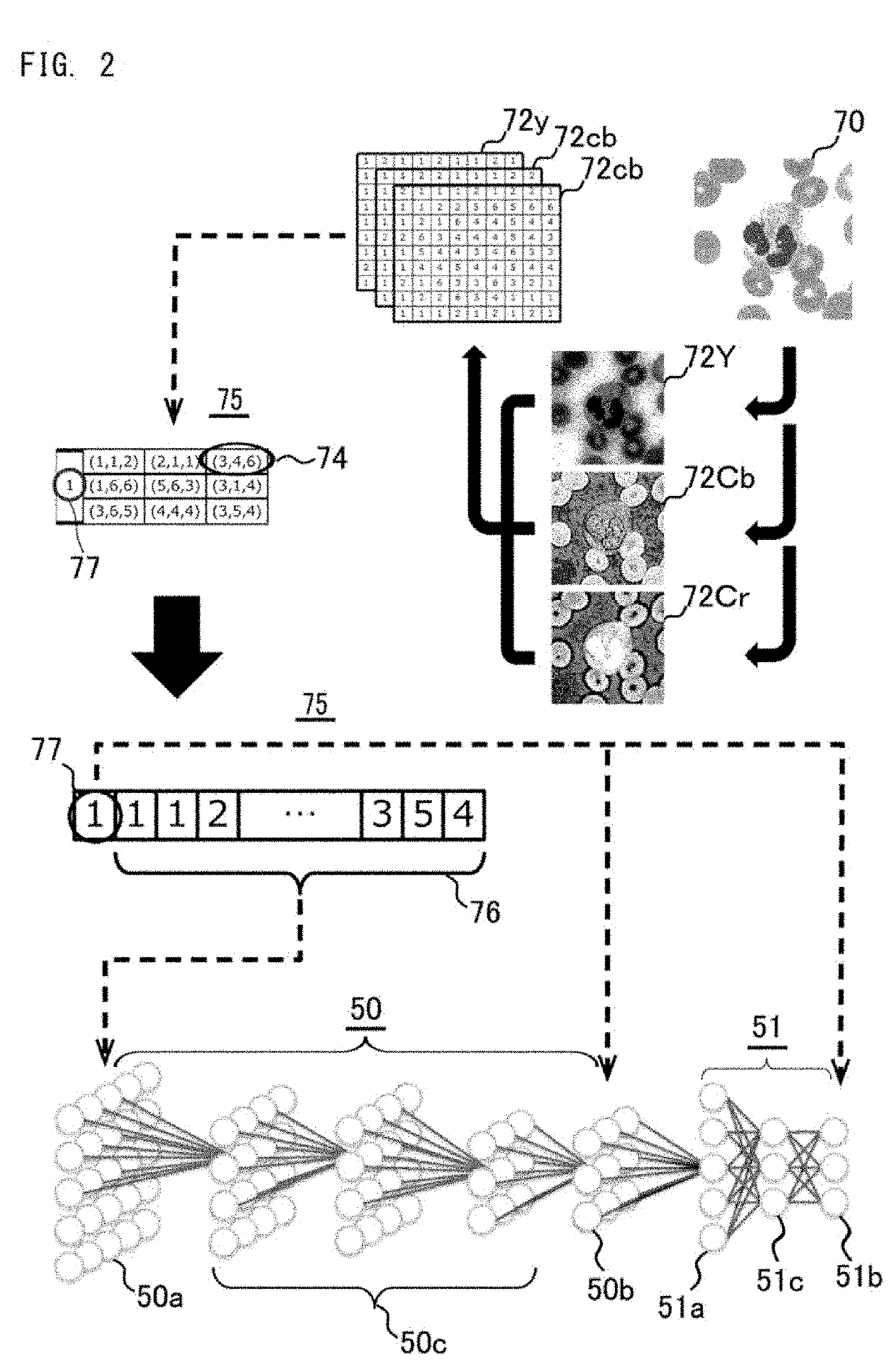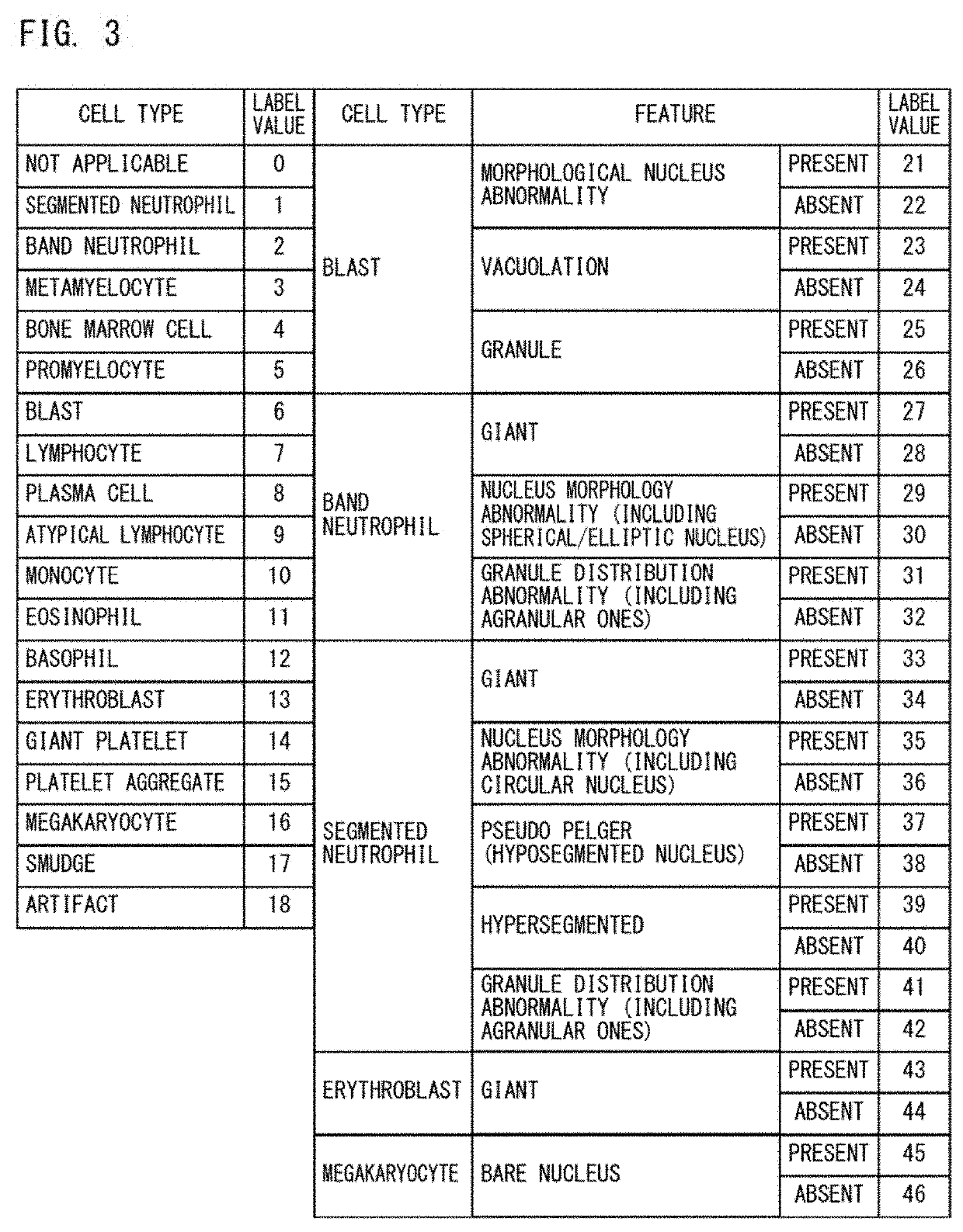Image analysis method, apparatus, non-transitory computer readable medium, and deep learning algorithm generation method
a technology of deep learning and image analysis, applied in the field of image analysis methods, apparatus, non-transitory computer readable medium, and deep learning algorithm generation methods, can solve the problems of burden on examiners with 100 preparations or more per day, limited number of preparations that an examiner can observe per day, and insufficient skill, so as to achieve accurate morphological identification
- Summary
- Abstract
- Description
- Claims
- Application Information
AI Technical Summary
Benefits of technology
Problems solved by technology
Method used
Image
Examples
first embodiment
[0047]the present disclosure relates to an image analysis method for analyzing cell morphology. In the image analysis method, analysis data including information regarding an analysis target cell is inputted to a classifier that includes a deep learning algorithm having a neural network structure. The classifier calculates the probability that the analysis target cell belongs to each of morphology classifications of a plurality of cells belonging to a predetermined cell group. Preferably, the image analysis method further includes identifying, on the basis of the probability, which of the morphology classifications of the plurality of cells belonging to the predetermined cell group corresponds to the analysis target cell.
[0048]In the first embodiment, the analysis target cell belongs to a predetermined cell group. The predetermined cell group is a group of cells that form each organ in the body of a mammal or a bird. The predetermined cell group, in a normal state, includes a plural...
second embodiment
[0077]the present disclosure relates to an image analysis system.
[0078]With reference to FIG. 5, an image analysis system according to the second embodiment includes a deep learning apparatus 100A and an image analysis apparatus 200A. A vendor-side apparatus 100 operates as the deep learning apparatus 100A and a user-side apparatus 200 operates as the image analysis apparatus 200A. The deep learning apparatus 100A causes the neural network 50 to learn by use of training data, and provides a user with the deep learning algorithm 60 having been trained by use of the training data. The deep learning algorithm configured by the neural network 60 having learned is provided to the image analysis apparatus 200A from the deep learning apparatus 100A through a storage medium 98 or a network 99. The image analysis apparatus 200A analyzes an image of the analysis target by use of the deep learning algorithm configured by the neural network 60 having learned.
[0079]The deep learning apparatus 10...
third embodiment
[0160]According to the image analysis apparatus 100B of the third embodiment, the user can use the classifier, without obtaining the training data database 104 and the algorithm database 105 from the deep learning apparatus 100A. Accordingly, the service for identifying the cell type and cell feature based on morphological classification can be provided as a cloud service.
[4. Other Embodiments]
[0161]The outlines and specific embodiments of the present disclosure have been described. However, the present disclosure is not limited to the outlines and embodiments described above.
[0162]In the present disclosure, an example of a method for generating the training data 75 by converting the tone into brightness Y, first hue Cb, and second hue Cr has been described. However, the conversion of the tone is not limited thereto. Without converting the tone, the three primary colors of red (R), green (G), and blue (B), for example, may be directly used. Alternatively, two primary colors obtained...
PUM
 Login to View More
Login to View More Abstract
Description
Claims
Application Information
 Login to View More
Login to View More - R&D
- Intellectual Property
- Life Sciences
- Materials
- Tech Scout
- Unparalleled Data Quality
- Higher Quality Content
- 60% Fewer Hallucinations
Browse by: Latest US Patents, China's latest patents, Technical Efficacy Thesaurus, Application Domain, Technology Topic, Popular Technical Reports.
© 2025 PatSnap. All rights reserved.Legal|Privacy policy|Modern Slavery Act Transparency Statement|Sitemap|About US| Contact US: help@patsnap.com



